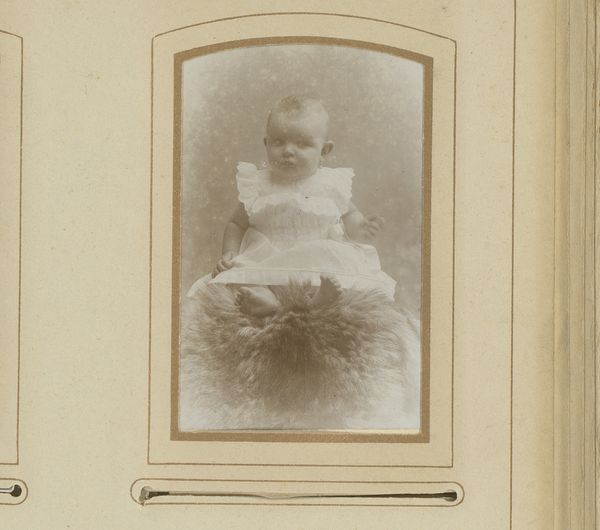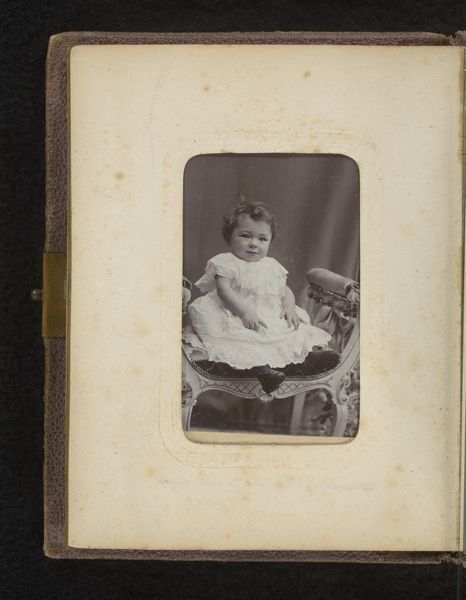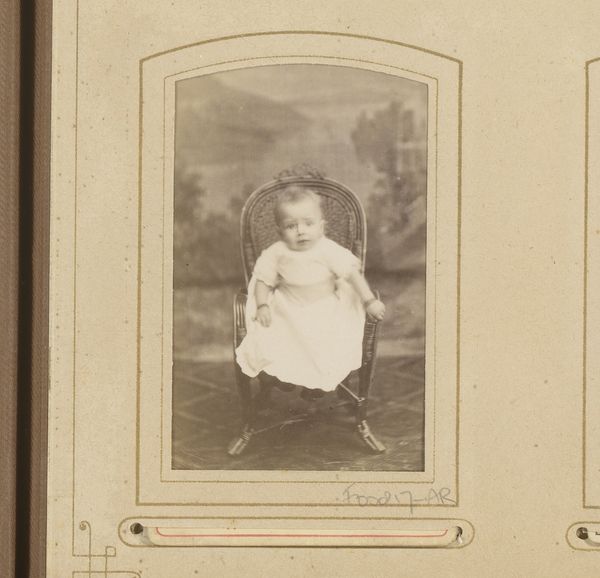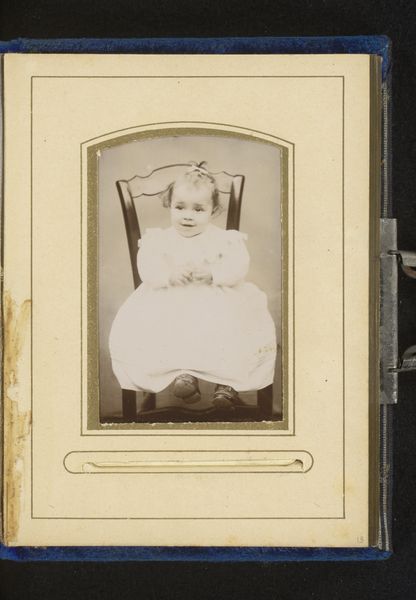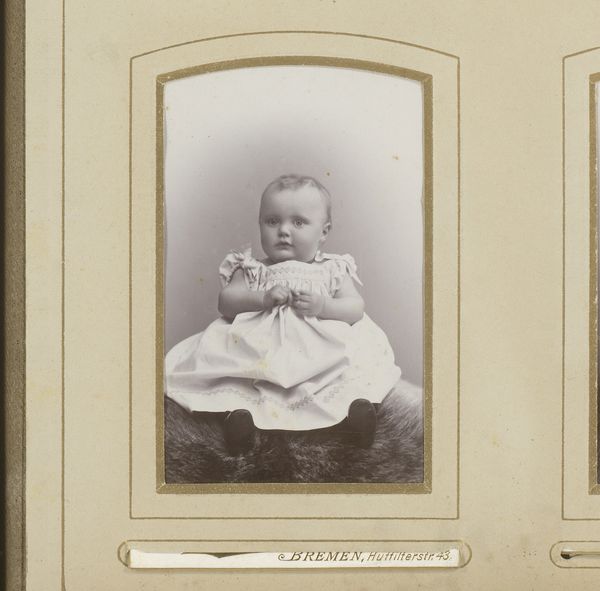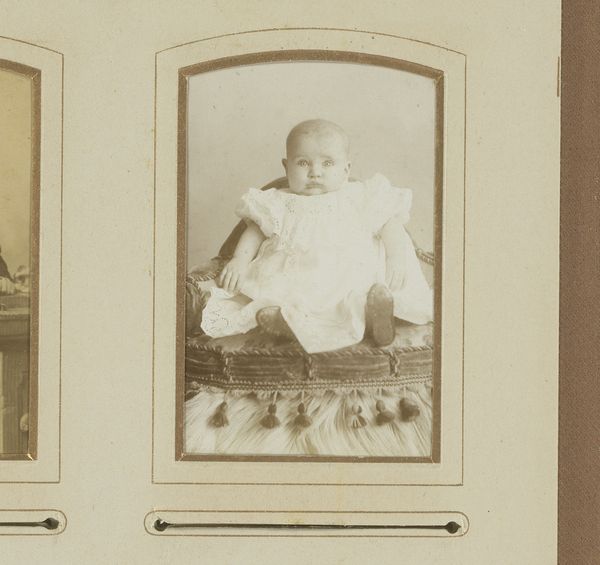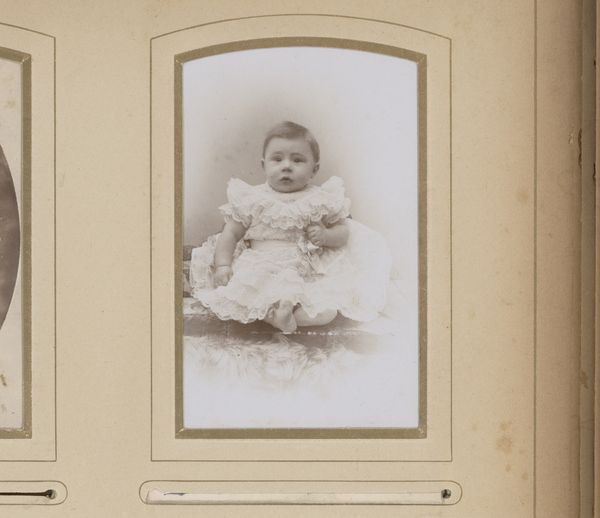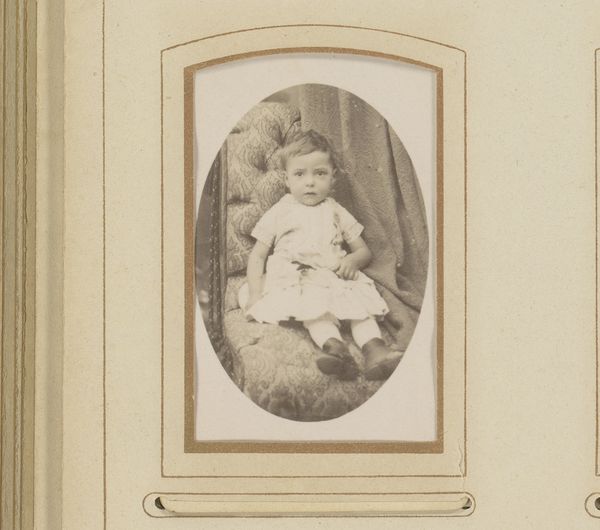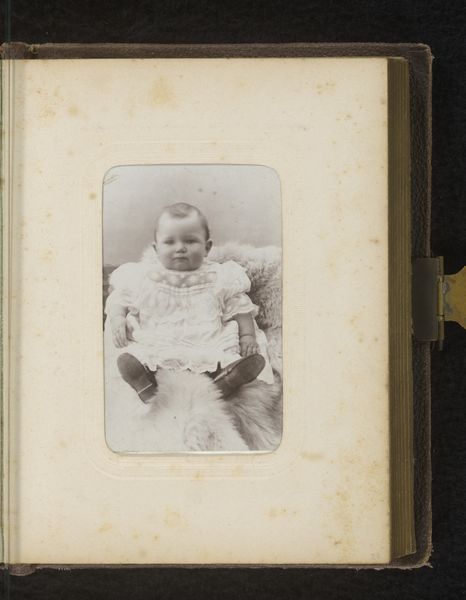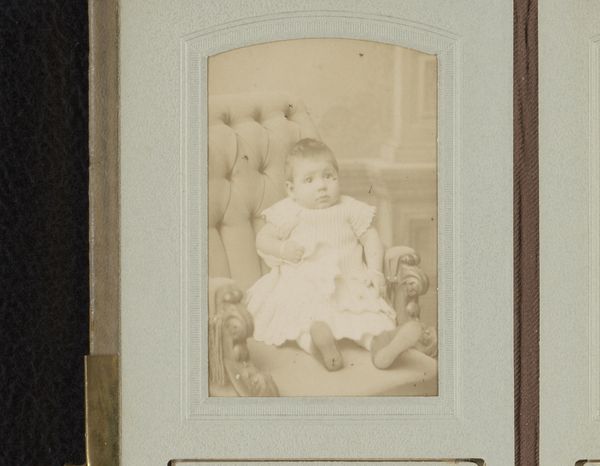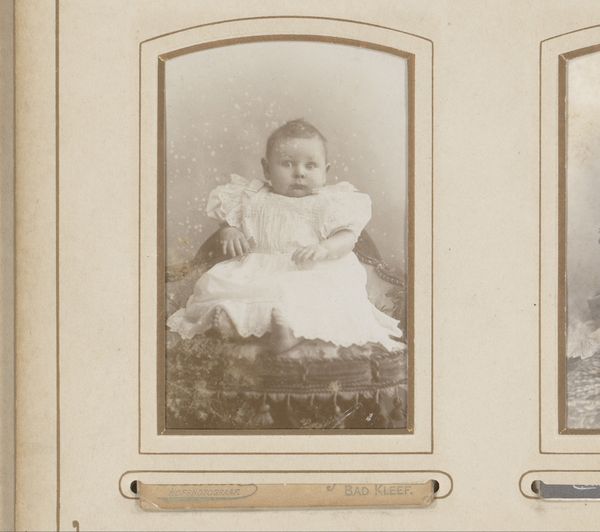
photography
#
aged paper
#
toned paper
#
muted colour palette
#
photography
#
nude colour palette
#
19th century
#
neutral brown palette
#
genre-painting
#
watercolor
Dimensions: height 83 mm, width 52 mm
Copyright: Rijks Museum: Open Domain
Editor: This is "Portret van een zittende baby," or "Portrait of a Seated Baby" by H.C. de Graaff, probably taken sometime between 1890 and 1920. It looks like a photograph with watercolor applied to it. What really strikes me is the sense of formality around it, especially juxtaposed with the baby's slightly confused expression. How do you interpret this work? Curator: That formality is a fascinating entry point. I see in this image a very self-conscious performance of societal expectations. Think about the cultural memory embedded in early photography. Photographs of children weren’t just snapshots; they were often commissioned as a way to mark time, commemorate milestones, and, crucially, to project a certain image of family and respectability. Editor: So the image isn't really "natural", then? Curator: Precisely! Note the careful composition: the soft, neutral palette, the props - all these elements are chosen to convey specific values. Consider how clothing acts as a signifier in photographs from this era. What does the frilly dress worn by the child tell you? Is it practical? Comfortable? Or is it performing another function? Editor: I guess the dress signifies a level of wealth and the parents’ aspirations for the child's future? I suppose that applies now as well, maybe? Curator: Yes! And consider the gaze – the baby looking directly at the camera is more than just a picture; it is a statement that says: "We are present. We are participating. We are visible". What could that represent? Editor: Wow, I hadn't thought of photography that way. I am intrigued by the cultural weight behind the portrait! Curator: Yes, and images are never ‘neutral’. They communicate a sense of belonging and a desire for acceptance. Editor: I'll definitely look at old photos differently from now on! Thanks!
Comments
No comments
Be the first to comment and join the conversation on the ultimate creative platform.
